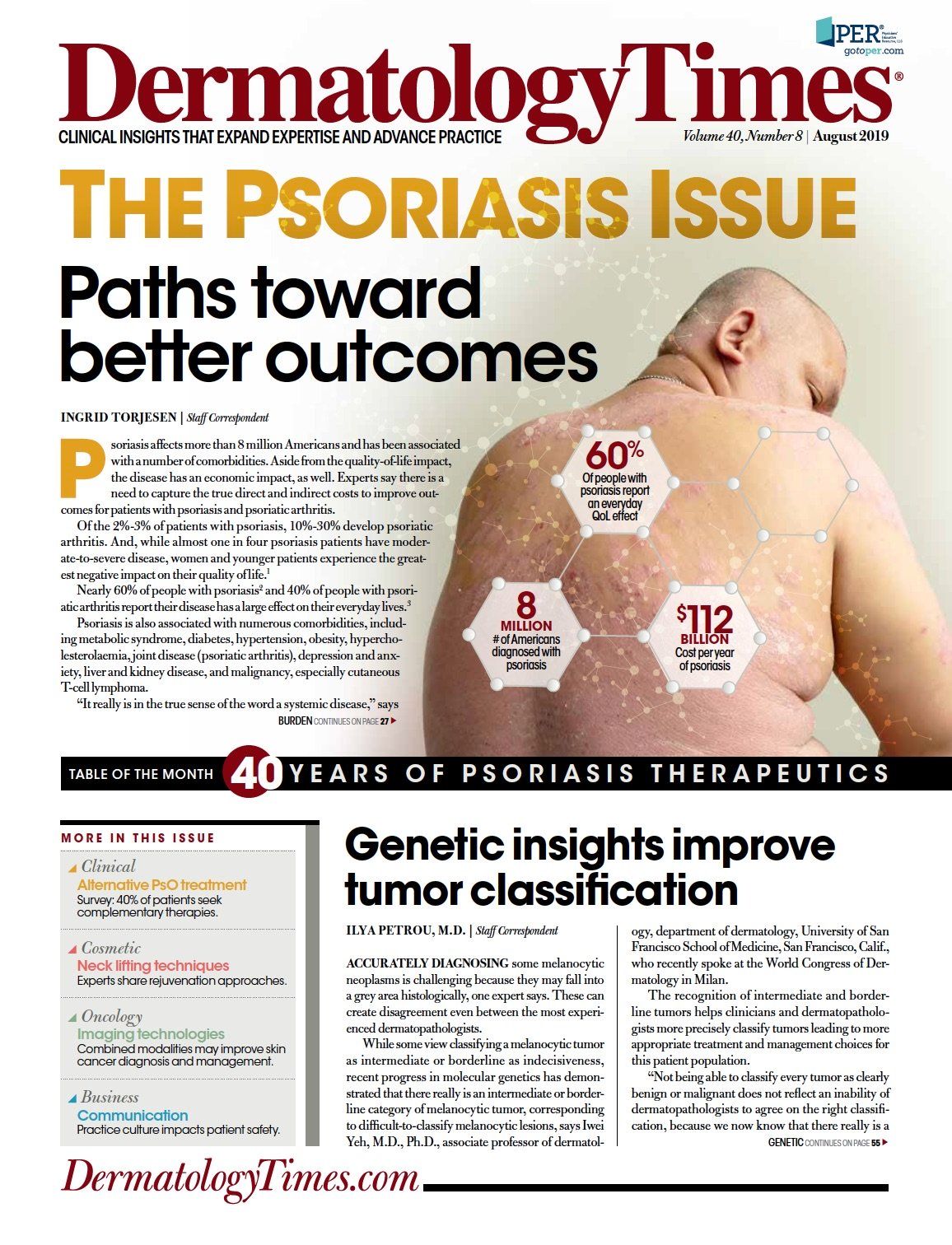- Case-Based Roundtable
- General Dermatology
- Eczema
- Chronic Hand Eczema
- Alopecia
- Aesthetics
- Vitiligo
- COVID-19
- Actinic Keratosis
- Precision Medicine and Biologics
- Rare Disease
- Wound Care
- Rosacea
- Psoriasis
- Psoriatic Arthritis
- Atopic Dermatitis
- Melasma
- NP and PA
- Skin Cancer
- Hidradenitis Suppurativa
- Drug Watch
- Pigmentary Disorders
- Acne
- Pediatric Dermatology
- Practice Management
- Prurigo Nodularis
- Buy-and-Bill
Publication
Article
Dermatology Times
Skin cancer imaging device speeds diagnosis
Author(s):
A new technology based on laser-induced breakdown spectroscopy has demonstrated accuracy in both sensitivity and specificity for discriminating skin cancers from benign lesions, one expert says.
Dr. Goo

A new device based on laser-induced breakdown spectroscopy (LIBS) has demonstrated efficacy in providing quick and accurate imaging of suspicious pigmented lesions and nonmelanoma skin cancers, more so than other leading imaging technology, one expert says.
The Spectra-Scope (Speclipse, Inc., Sunnyvale, Calif.) reportedly allows for real-time, noninvasive in-vivo skin cancer diagnosis utilizing a combination of non-discrete molecular laser spectroscopy and machine learning / deep learning algorithms. The more spectral data is collected, the more accurate the deep learning classification will be, says Boncheol Leo Goo, M.D., Naeum Dermatology and Aesthetic Clinic, Seoul, Korea, and chief medical officer at Speclipse, Inc., who recently spoke at the annual ASLMS conference in Denver.
The device can be helpful in office-based skin cancer screening as well as real-time on-site skin cancer detection during skin cancer surgeries, Dr. Goo says. The LIBS system can be installed as an add-on to any short-pulsed (picosecond and nanosecond) aesthetic laser. It can also be used as a stand-alone model with an integrated small-sized laser source, without the need for any additional equipment.
“This new LIBS technology has shown great promise in the preliminary studies,” Dr. Goo says. “Pathologic diagnosis-based cancer detection is considered to be time and labor consuming. The novel LIBS technique could help clinicians arrive at a quick and accurate diagnosis, potentially preventing unnecessary skin biopsies, which can further help save valuable time and resources.”
A recent study1 utilizing the LIBS device showed highly accurate skin cancer detection outcomes, demonstrating both a high sensitivity (95%) and specificity (87%) for discriminating skin cancers from benign lesions. There were no adverse events or microscopic damage on the irradiated skin.
According to Dr. Goo, other leading imaging techniques can reach accuracy levels of approximately 90% sensitivity and specificity when discerning between benign and malignant lesions, lower than the LIBS diagnostic modality.
The LIBS device can save time for the clinician and patient by creating unique patterns for instant analyzing within a second, without any need for interpretation or any kind of tissue processing procedures, Dr. Goo says. As the technique is completely noninvasive, there is no concern for leaving any scars as is typically seen following conventional biopsy procedures.
“The technique does not cause any trauma to the skin. It has all of the diagnostic benefits of conventional biopsies without any of the risk and aesthetic consequences often associated with them,” Dr. Goo says.
The current goal for noninvasive optical biopsy is to create very accurate imaging that is very similar and can be likened to histologic slides. Other noninvasive imaging technologies such as confocal microscopy have the benefit in diagnostics of being able to image the architecture of the target area in great detail, essentially offering a reconstruction of the histology findings without having a physical biopsy. Compared to LIBS however, Dr. Goo says the image process is slower and physicians need to visit special interpretation training courses to help them learn the RCM procedure and how to best evaluate images.
“I believe clinicians will be very interested in this technology, which is on-course to receive CE-approval this year and in my opinion, LIBS is the best noninvasive imaging technology that has been developed to date. We expect the technique will be very useful in avoiding some of the simple potentially unnecessary shave or punch biopsies. I hope that it will serve as a useful adjuvant diagnostic tool to other diagnostic procedures such as dermoscopy or for quicker staging in Mohs surgery,” Dr. Goo says. Â
Disclosures:
Dr. Goo reports a financial interest in Speclipse, Inc.
References:
1. Munavalli G. Clinical assessment of a real time, noninvasive, in vivo skin cancer diagnostic device based on laser spectroscopy and deep learning algorithm using aesthetic lasers. Presented at American Society for Laser Medicine and Surgery annual meeting; Saturday, March 31, 2019: Denver.






